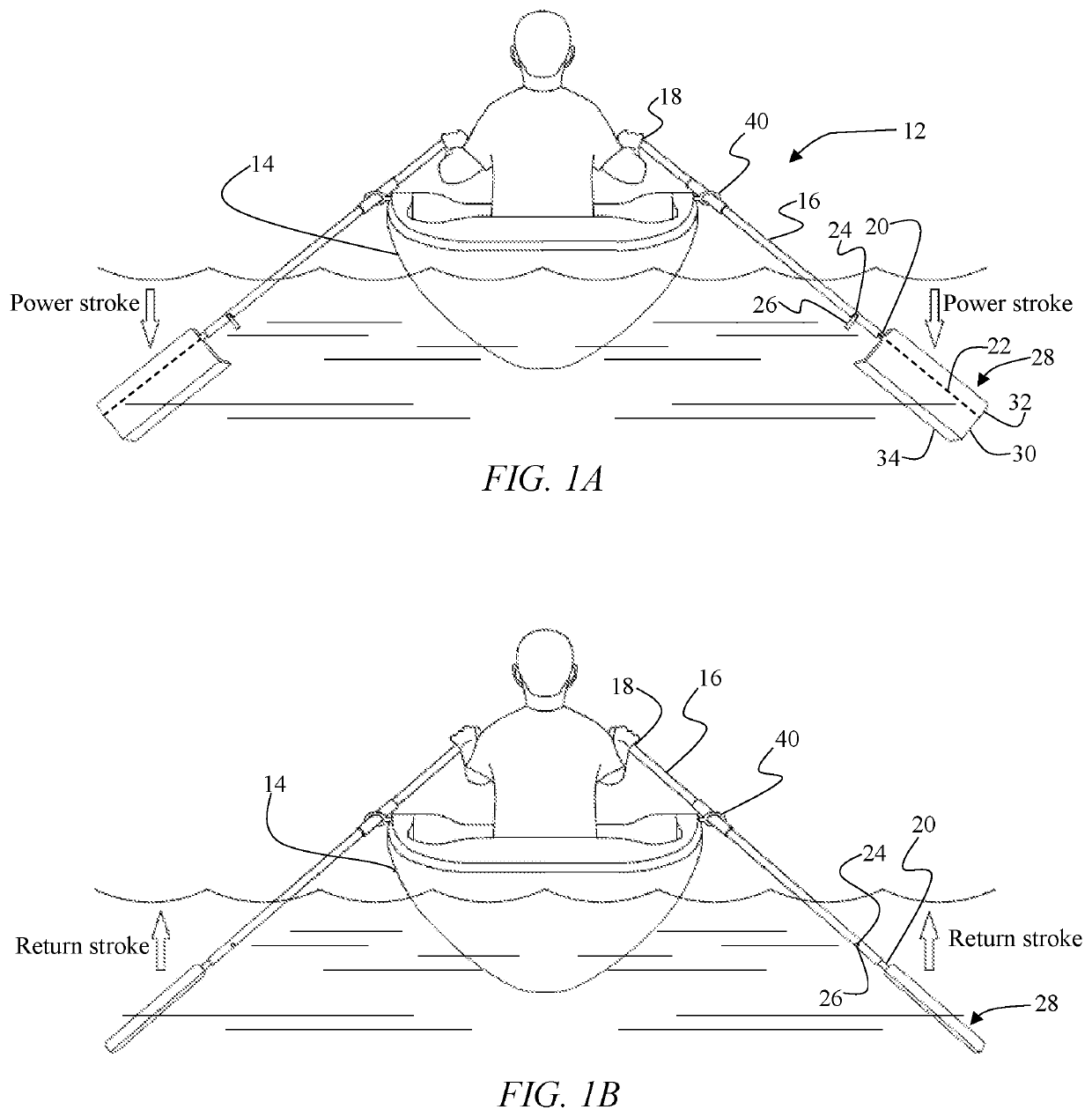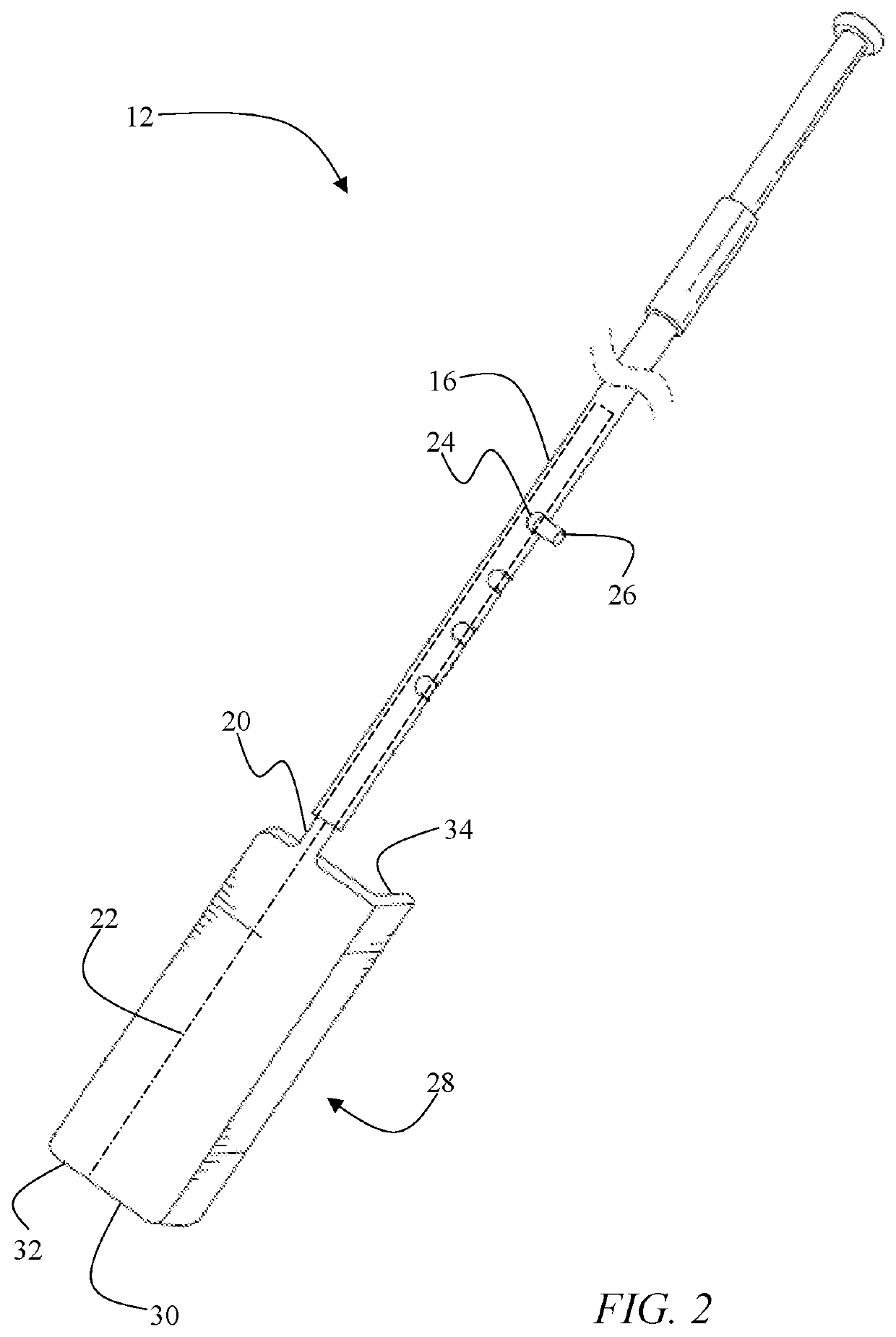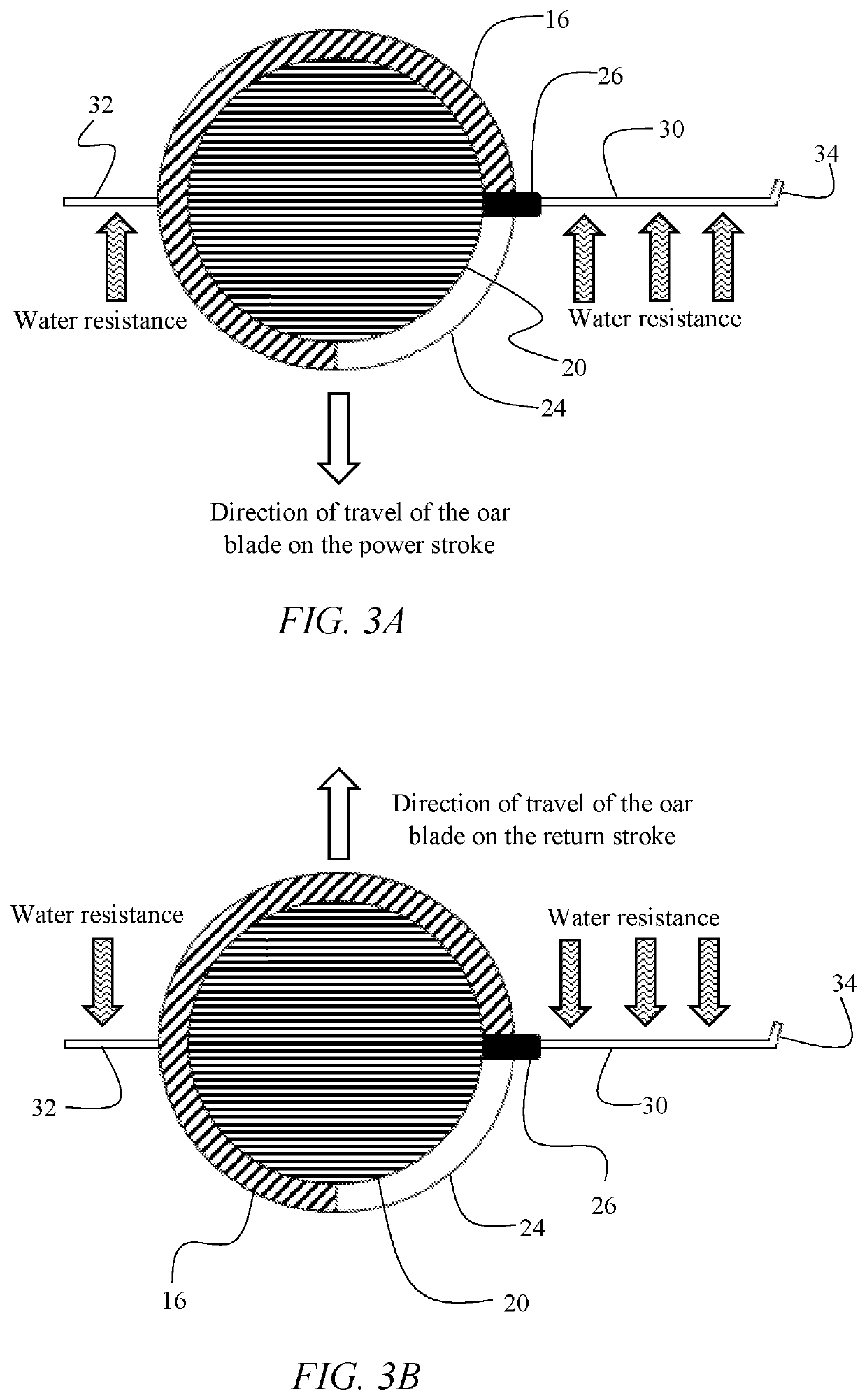Oar apparatus having a pivoting oar blade
a technology of oar blades and oar blades, which is applied in the field of oars, can solve the problems of unresolved design flaws, prone to malfunction of self-feathering mechanisms involving hinges and springs, and the like of those taught, so as to facilitate smooth and low-friction rotation of shafts, facilitate reliable repeated rotation, and reduce static and kinetic friction coefficients
- Summary
- Abstract
- Description
- Claims
- Application Information
AI Technical Summary
Benefits of technology
Problems solved by technology
Method used
Image
Examples
Embodiment Construction
[0024]In the following detailed description of the preferred embodiment, reference is made to the accompanying drawings, which form a part hereof, and within which specific embodiments are shown by way of illustration by which the invention may be practiced. It is to be understood that other embodiments may be utilized, and structural changes may be made without departing from the scope of the invention.
[0025]Referring to FIGS. 1A and 1B, an embodiment of the invention pertains to an oar apparatus 12 manually operated by a rower to propel a vessel 14 through the water. The oar apparatus 12 has a sheath 16. Sheath 16 may have a tubular body with an internal lumen. A handle 18 may be disposed on a proximal end of sheath 16 to enable the rower to comfortably hold and operate oar apparatus 12.
[0026]FIGS. 1A-1B and 2 depict that oar apparatus 12 has a shaft 20 coupled to sheath 16. Shaft 20 may have an elongated cylindrical body. A first end of shaft 20 resides within the lumen of sheath...
PUM
 Login to View More
Login to View More Abstract
Description
Claims
Application Information
 Login to View More
Login to View More - R&D
- Intellectual Property
- Life Sciences
- Materials
- Tech Scout
- Unparalleled Data Quality
- Higher Quality Content
- 60% Fewer Hallucinations
Browse by: Latest US Patents, China's latest patents, Technical Efficacy Thesaurus, Application Domain, Technology Topic, Popular Technical Reports.
© 2025 PatSnap. All rights reserved.Legal|Privacy policy|Modern Slavery Act Transparency Statement|Sitemap|About US| Contact US: help@patsnap.com



